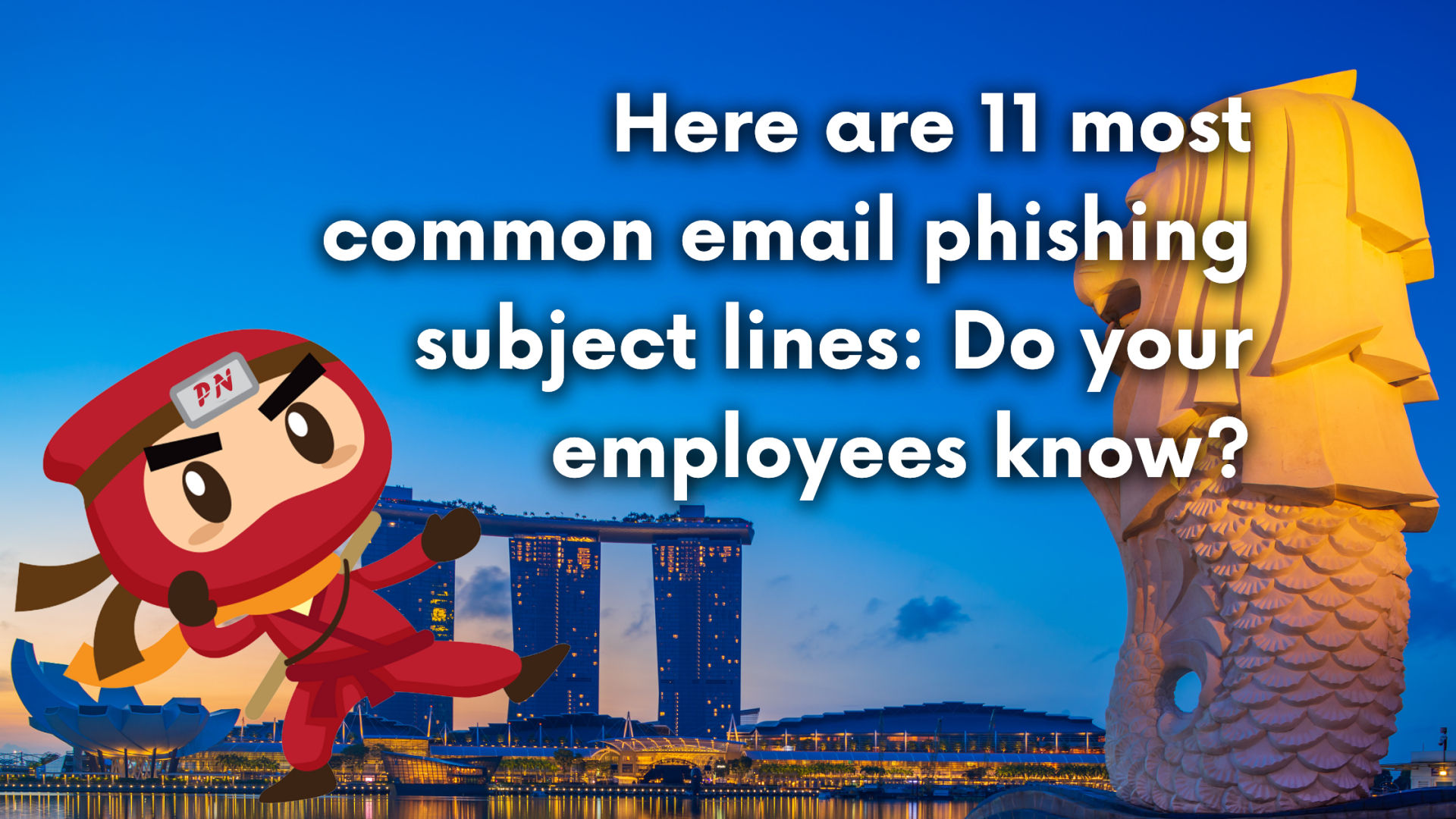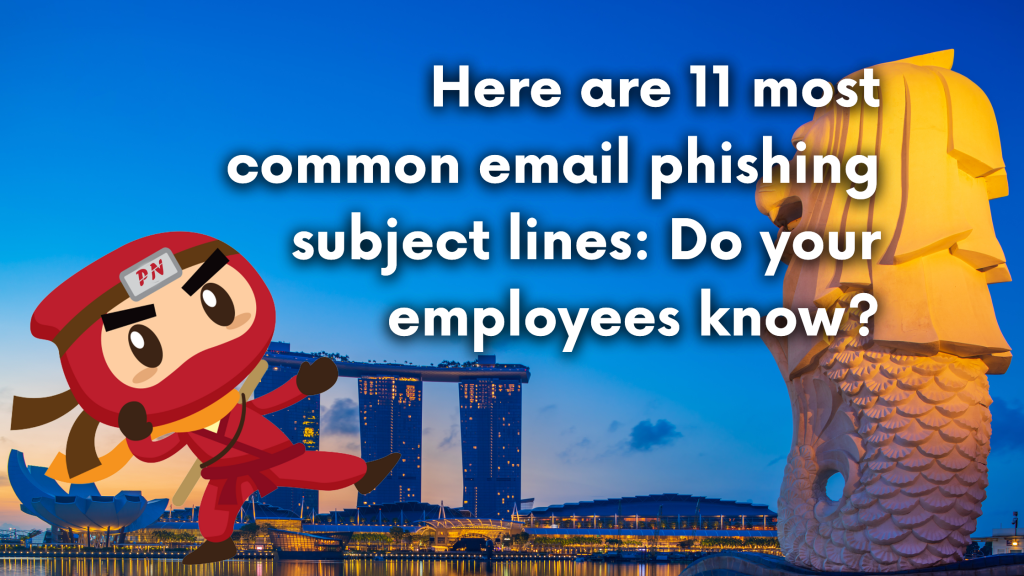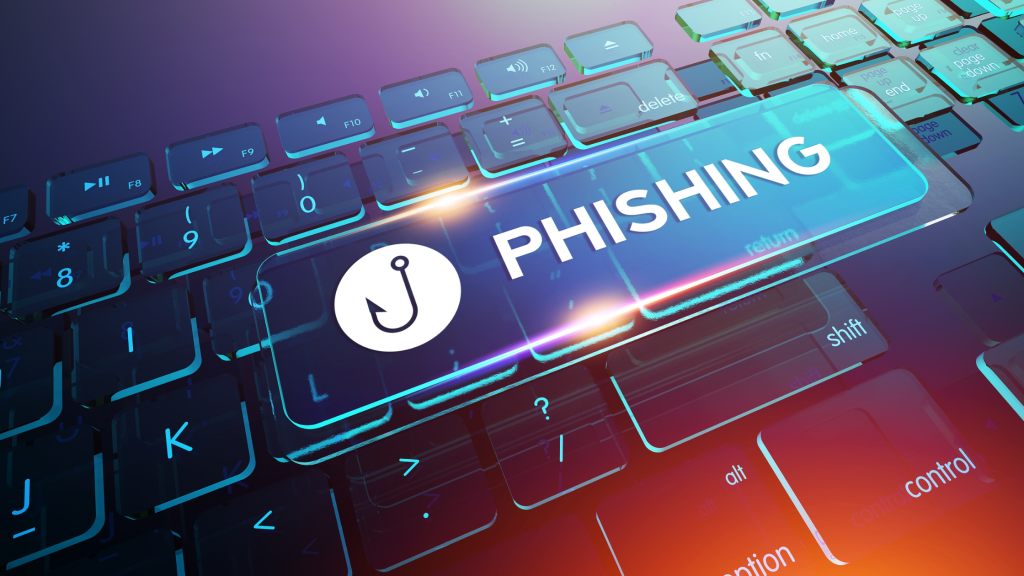KEEP IN TOUCH
Subscribe to our mailing list to get free tips on Data Protection and Cybersecurity updates weekly!







Employees are considered the weakest link for organisations when it comes to cybersecurity. Since they have access to the organisation’s inner workings, they are often targeted by bad actors in hopes of infiltrating the organisation’s database and other essential systems.
By now, all employees have already received an appealing email for an employment opportunity that gives them more compensation with less work. However, the game has changed for phishers who utilise enticing job opportunities with much more enticing ones.
Nowadays, skilled phishers have abandoned the “irresistible work opportunities” in favor of urgent business messages or cybersecurity alerts. “The most common subject lines used in phishing emails targeting businesses show how cybercriminals are exploiting urgency, personalisation, and pressure to trick victims into clicking on malicious links, downloading malware, or otherwise surrendering confidential or sensitive corporate information,” according to a recent ZDNet article.
In other words, fraudsters instill a false sense of urgency to deceive employees into clicking before they think. This method has been seen as more effective than any other cause, as 53% of firms reported a phishing-related breach. Fortunately, there are strategies you may use to equip your personnel to avoid phishing efforts. One of the most effective security awareness methods you can provide is teaching them how to recognise a phishing email’s subject line.
Also Read: 5 Ransomware Singapore facts: What your organisation should know

This subject line is deceptive because it capitalises on a common occurrence in offices around the world: expired passwords. The average employee has dozens of passwords to remember, some of which have expiration dates. As a result, when an email alerts them that their password needs to be updated, it disguises itself as a nice reminder. However, this is not the case.
By clicking the link, the employee will be taken to a spoof site that will steal their employee’s login credentials. The hacker has now gained access to the account. Furthermore, because one out of every eight employees would inadvertently share information on a phishing site, this presents an ideal training opportunity.
Keep a watch out for the following variants on this email subject line:
Cybercriminals have been known to pose as third-party providers in order to get access to a company’s financial resources. One of these methods is to send an email claiming that an account’s billing information needs to be changed. An unknowing employee may click on the link to a counterfeit site and submit billing information, giving hackers access to company credit card or bank account data.
Payment departments should be well-oiled machines, which is why a perceived payroll delay may have disgruntled employees scrambling to learn more about the matter. Their search for an explanation will bring them to a phishing website, which will harvest their credentials while leaving the legitimate payroll department in the dark.
It is human nature to dislike keeping people waiting. If you’ve ever been caught in traffic just minutes before an important meeting, you’re familiar with the feeling of dread.
In an employee’s inbox, hackers have replicated that horrific scenario. A subject line regarding meeting guests will almost certainly have them rushing to the link to the “meeting room,” only to be infected with malware.
Phishing emails can fool employees by masking their contents as something important. After all, if an email appears to be critical to your job, you’re much less inclined to ignore it. As a result, scammers are increasingly using lofty-sounding subject lines. In the aftermath of COVID-19, this could involve a re-opening schedule or immunisation policy.

What exactly is it? Vaccination secrets? A list of top-secret testing locations? People enjoy secrets because they make us feel special and important. Furthermore, if the email promises to inform us about something life-changing, such as COVID-19, we feel even more pressure to click on it.
If you haven’t done, it could be a good idea to notify your employees about COVID-19 phishing emails. They increased by 30,000 percent in 2020 and will continue to be effective when new COVID strains emerge.
Ingenious attackers may try to disguise their emails as business messages from Human Resources. One of the most frequently clicked attacks is concerning new employee policy about vacation time or other benefits.
Keep in mind that HR resources are frequently only available through an employee portal. As a result, hackers may attempt to steal your employees’ login credentials via a spoof site or portal.
From annual raises to holiday bonuses and everything in between, any mention of compensation is sure to pique the employees’ interest. One fraud purports to come from the company’s human resources department regarding a raise. A spreadsheet claiming to detail the employee’s wage increase is linked or attached. Unfortunately, the link takes the user to a bogus login page that steals the employee’s credentials. The only person who gets a raise is the con artist!
This attack has lately made headlines. GoDaddy, a website hosting company, attracted undesired media attention after sending a phishing email to its employees, claiming that they had received a $600 Christmas bonus (which did not exist). The activity sparked several ethical concerns about subjecting employees to such blatantly emotional content in order to evaluate their security awareness.
Many businesses utilise collaborative solutions such as Dropbox to allow employees to share media such as documents and photographs in real-time. File attachments, unfortunately, are a common route for malware. Furthermore, 12% of people who get infected attachments will open them. Infected files will be propagated by hackers faking a Dropbox email and deceiving their victims into downloading the document.
“ALERT!”, “DANGER!”, “ACT RIGHT AWAY!”. That’s exactly what this subject line says, and it’ll have employees rushing to open the email for additional information. When they arrive at the website, they will be prompted to input their credentials, and the true security breach will commence.
Many people in today’s gig economy like to blend lucrative side hustles with their main line of work. Hackers take advantage of this by presenting bogus work-from-home and freelance opportunities.
Depending on the sophistication of the operation, these hackers could steal anything from sensitive personal information (such as Social Security numbers and bank accounts) to actual money by saying it pays for onboarding materials such as computers and tablets.

It is essential that organisations ensure that their employees are well aware and not susceptible to being a victim of email phishing scams. Luckily, there is a way to check if your employees can be fooled into clicking malicious links and risk your organization’s cybersecurity posture.
Malicious links sent through emails that employees click could be the entry point for bad actors in email phishing attacks. This is why it is best to know if your employees are at risk of being the next victims. Get your free simulated email spoofing exercise from Privacy Ninja now, and check if your organisation is safe from malicious actors.
Also Read: Data governance framework: What organisations in Singapore should know